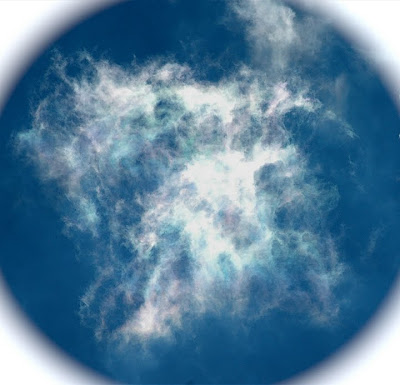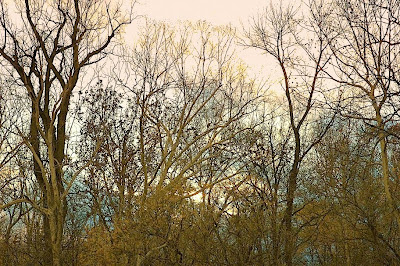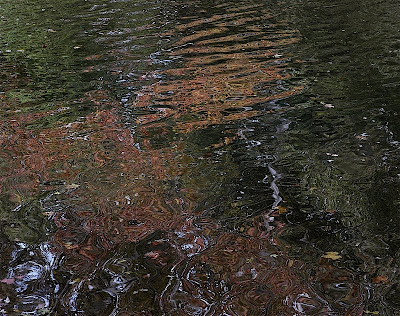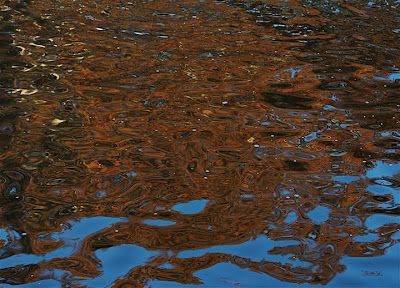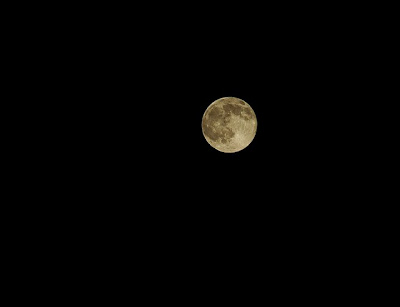
A Cooper's hawk lands in the box elder beyond my workroom window.

Something—a slight noise, intuition—causes the hawk to looked behind…

…and then to turn around…

…for a perch and view facing toward the sound.

Every single inch is scrutinized…

…no direction is overlooked.

Eighteen inches from the window, and fifteen feet from the keen-eyed hawk, a chickadee huddles, back to the feeder which blocks the hawk's view—and seems to stare imploringly at me to not give it's precarious position away.

Even closer to the hawk—in fact no more than five feet away, in plain view on the same side of the tree as the Coooper's—a gray squirrel flattens, caught without refuge, masquerading as a bump in the bark an eyeblink from winged death. Only by holding their places until the hawk gives up and flies off does either near-victim manage to escape the hawk's notice.
——————
Too often, I expect, when we consider wild creatures, we do so with a sugar-coated, Disneyesque overview that ignores the precarious reality of their daily existence.
It isn't easy being a chickadee or gray squirrel, field mouse or raccoon, coyote or Cooper's hawk. Life is tough—quite literally, a life over death struggle. Moreover, a struggle which must be played out and won day after day, winter, spring, summer, fall.
The first imperative, as it is for all of us inhabiting plant earth, is eat or die. Some of us pampered folks might take a rather long time to actually die of starvation. But if you're small with a high metabolic rate, you can starve to death in a matter of hours if you fail to find sufficient food for your next meal.
Food equals energy equals life.
No matter which wild creature you study, one of the first things you realize is how much time that animal spends looking for something to eat and/or actually eating. Grazers graze…a lot. A downy woodpecker spends practically every waking hour pecking and probing up and down the trunks of trees and their branches, looking for insects and spiders, grubs and larva, plus a few tasty seeds picked up along the way. In fact, most birds spend most of their awake time eating or looking for food.
So do squirrels. Yes, they chase around through the treetops a bit, and occasionally stretch out on a limb in the sun for a nap—but mostly they look for food and eat what they find. The same can be said for skunks, woodchucks, and whitetail deer.
Eat or die, there's no other choice. But there's an addendum to the equation: for most animals, it's eat or die…and sometimes die by being eaten. The life-and-death dynamics of predator and prey. To search for food, you must expose yourself to becoming food; the consumer consumed.
At the risk of being labeled anthropomorphic, I'd say there's desperation and terror on the face and in the eyes of the chickadee—and a look of near-resignation on the gray squirrel. A cognizance by both that death is close, maybe inevitable.
If you're lucky, you've never known the experience of being prey. Not much hunts us except other men. The fear of death stalking and finding us amid the long grass, or in a sudden, sharp-taloned swoop from the sky, is not chief among or modern worries. For that, I'm very glad.
Nor should we look upon this hunting hawk as a villain. It isn't, no more than the downey woodpecker searching for an ant or beetle among the folds of bark.
Still, I'm happy that, this time around, both the chickadee and squirrel escaped…though I hope the Cooper's hawk didn't go hungry too long thereafter.


